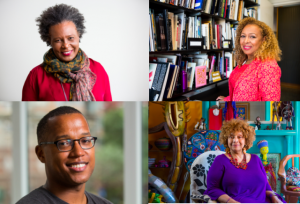 Getting a phone call from an unidentified number in Chicago in late summer is a fantasy many artists, scientists and other creative people have entertained. But that doesn’t mean it seems real when it actually happens.
Getting a phone call from an unidentified number in Chicago in late summer is a fantasy many artists, scientists and other creative people have entertained. But that doesn’t mean it seems real when it actually happens.
“I thought I was having a psychotic breakdown,” the playwright Branden Jacobs-Jenkins said of his reaction to learning several weeks ago that he was among the 23 people selected as 2016 fellows of the John D. and Catherine T. MacArthur Foundation.
“I went out on the street, and ran into a friend,” Mr. Jacobs-Jenkins continued. “I had him look at my cellphone, just to confirm that the call had been real.”
This year’s winners of the MacArthur fellowships, awarded for exceptional “originality, insight and potential,” and publicly announced on Thursday, include writers, visual artists, scientists, nonprofit organization leaders and others, who are chosen at a moment when the recognition and money — a no-strings-attached grant of $625,000 distributed over five years — will make a difference.
“We want to give people new wind against their sails,” said Cecilia A. Conrad, a managing director of the foundation and the leader of the fellows program.
The honorees include relatively well-known figures in the arts like the poet Claudia Rankine, 53, whose book “Citizen,” (2014) which explored racism in everyday life, won numerous awards and made the New York Times best-seller list; the essayist Maggie Nelson, 43, who won the 2015 National Book Critics Circle Award for criticism for “The Argonauts,” a hard-to-classify exploration of gender, motherhood and identity; and Gene Luen Yang, 43, who in January became the first graphic novelist named national ambassador for children’s literature by the Library of Congress.
The youngest fellow is Mr. Jacobs-Jenkins, 31, known for plays, like “An Octoroon” and “Neighbors,” that address race, class and history, sometimes through the remixing of charged stereotypes. The oldest is Joyce J. Scott, 67, a Baltimore-based artist whose work includes performance art and large-scale sculptural pieces that incorporate traditional beadwork into pointed commentaries on American culture, the black female body and other subjects.


